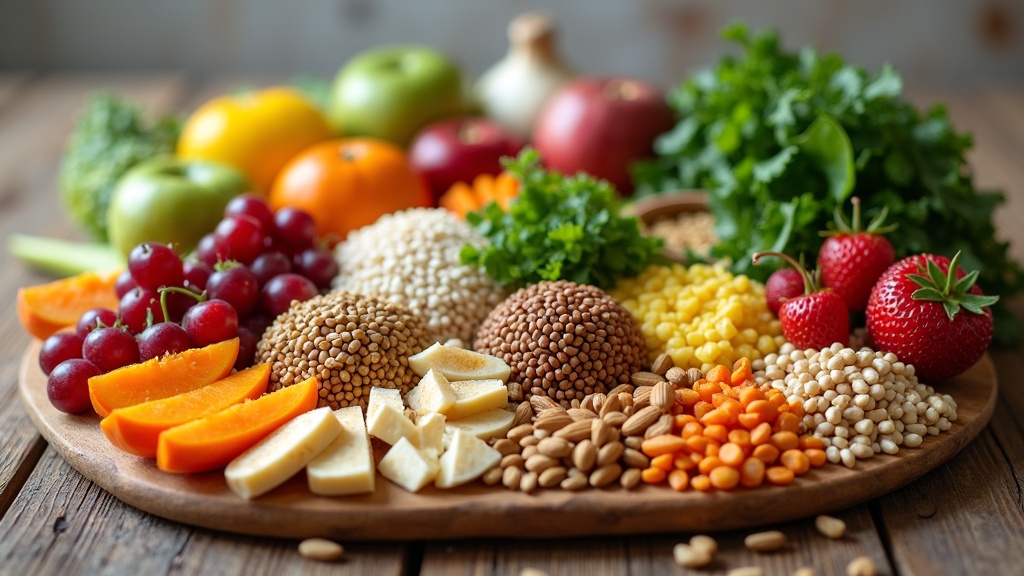Managing diabetes with the right foods can make your daily routine much smoother. There’s a lot of confusion about what to eat, especially with all the mixed messages out there about carbohydrates and sugar. I’ve spent a lot of time researching and even testing recipes myself, so in this article I’ll break down which foods and fruits work well for diabetes. This way, you’ll have a clearer path when building your meals.

Understanding What Makes Food Good for Diabetes
Controlling diabetes goes beyond just avoiding sugar. The bigger picture is to keep your blood sugar steady and give your body what it needs without big spikes or crashes. Foods that score low on the glycemic index (GI) tend to be better because they’re digested slowly, so your blood sugar stays stable. Fiber, healthy fats, and lean protein are all really important too.
For people living with diabetes, thinking about meal timing and balancing your plate are also helpful strategies. You want foods that fill you up and keep hunger at bay, without giving those sudden rises in blood sugar. Planning your meals thoughtfully, aiming for a mix of different nutrients, is one of the best ways to support steady energy throughout the day.
Diabetes affects more than 400 million people worldwide, and that number grows every year. Diet is a major part of how many people manage their condition, sometimes alongside medication or other therapies. Even small tweaks in your everyday food choices can lead to better blood sugar outcomes long term.
Top Foods That Support Blood Sugar Control
When I’m grabbing groceries or helping a friend put together a diabetes friendly meal plan, these foods always make the list because of the way they help keep blood sugar steady:
- Leafy Greens: Spinach, kale, and romaine are all very low in carbohydrates but packed with vitamins, minerals, and fiber.
- Whole Grains: Think quinoa, brown rice, barley, and oats. These take longer to digest, so they don’t flood your bloodstream with sugar all at once.
- Legumes: Beans, lentils, and chickpeas are budget friendly, full of plant protein and keep you satisfied for hours.
- Fatty Fish: Salmon, mackerel, and sardines provide healthy fats (omega3s), which support heart health. That’s a top concern for people with diabetes.
- Nuts & Seeds: Almonds, walnuts, chia seeds, and flaxseeds are easy snacks packed with fiber and healthy fats. Just watch the portions since calories add up quickly.
- Non starchy Vegetables: Broccoli, cauliflower, zucchini, peppers, and asparagus can fill up your plate with a barely there effect on blood sugar.
- Eggs and Lean Meats: For people who include animal protein, eggs and lean chicken or turkey are good options that won’t cause sugar spikes.
Add in herbs and spices like cinnamon, turmeric, and ginger when cooking. Some research hints that they could help with blood sugar control, though they shouldn’t replace any medications or tried and true approaches. Cooking from scratch using these spices can also make food more flavorful, making it easier to stick to your eating plan.
Fruits That Are Diabetes Friendly
There’s a lot of misunderstanding about fruit and diabetes. Fruit has sugar, but it’s also full of fiber, vitamins, and minerals. The trick is to pick the right types and stick with the right portions.
- Berries: Blueberries, strawberries, raspberries, and blackberries all have less sugar than many other fruits, and their fiber makes them really filling.
- Apples: Eaten with the skin, apples provide vitamins and plenty of fiber. A small or medium apple (about the size of a tennis ball) works for most plans.
- Pears: Pears are juicy, full of fiber, and lower on the glycemic index, making them a tasty snack or salad addition.
- Peaches & Plums: These fruits in fresh, whole form (not canned in syrup) can add sweetness to your meal without going overboard.
- Kiwi: Kiwis are high in vitamin C and fiber. They’re a little tart, so they work well in bowls or alongside breakfast.
- Cherries: Cherries are lower on the GI scale and contain antioxidants that can help tone down inflammation.
- Oranges & Citrus Fruits: Oranges, grapefruits, and tangerines are good sources of vitamin C and fiber. Having the whole fruit beats drinking the juice, for sure.
The main takeaway: Go for whole, fresh fruit and avoid dried fruit or juices, which are much more concentrated forms of sugar and can cause fast rises in blood glucose.
Getting Started with Diabetes Friendly Eating
Jumping into a new way of eating can feel overwhelming, but a few basics help get everything on track:
- Balance Carbs with Protein and Fats: Every meal should have a mix. Try a plate with half non starchy vegetables, a quarter whole grains or legumes, and a quarter protein.
- Watch Portions: Plate size matters. Using a smaller plate can help keep portions in check, especially with carbs like rice and grains.
- Read Labels: Not every food that says “whole grain” is really whole. Look for short ingredient lists and check for added sugars (they hide under names like corn syrup or dextrose).
- Stay Hydrated: Water, herbal teas, or seltzer are good go to drinks. Sweetened drinks raise blood sugar really fast, so they’re best saved for treating a low.
I find meal planning on the weekend pretty handy, especially if you get burnt out cooking every single day. Chopping veggies and prepping some whole grains ahead makes healthy choices faster when life gets busy. You might want to write out your weekly menu, too, so you’re less tempted by quick, less healthy options at mealtimes.
Common Challenges and How to Handle Them
I’ve heard from a lot of people that the hardest part is changing habits and dealing with cravings. That’s especially true for sweets and bread. Here are some practical ideas that have worked for me and others:
- Keep Healthy Snacks Close: Small zip top bags with nuts, carrot sticks, or a piece of fruit in your bag or car can help you skip the vending machine.
- Find Smart Swaps: Cauliflower rice, zoodles (zucchini noodles), or lettuce wraps can replace higher carb foods without feeling like you’re missing out.
- Eat Mindfully: Taking time with your meals, eating slowly without screens, makes it easier to notice when you’re full and to appreciate your food.
- Handle Special Occasions: Potlucks and holidays can feel tricky. Bringing a dish you know works for you, like roasted vegetables or a fruit salad, means you’re never stuck without a good option.
It’s totally normal to slip up. Nobody eats perfectly all the time. The goal is steady improvement, not perfection. Celebrate your wins—no matter how small—because building habits is all about progress, not being flawless.
More Ideas for Everyday Meals
Eating with diabetes doesn’t mean boring or bland. Here are some ideas that work for breakfast, lunch, and dinner and keep things interesting:
- Breakfast: Greek yogurt with berries and a handful of walnuts, or scrambled eggs over sauted spinach and tomatoes.
- Lunch: Big salad with mixed greens, chickpeas, cucumbers, grilled chicken, and a homemade vinaigrette.
- Dinner: Baked salmon with quinoa, steamed broccoli, and a squeeze of lemon. Or stir-fried tofu with brown rice and lots of colorful veggies.
Adding a splash of flavor with spices or a squeeze of citrus keeps things tasty without piling on extra sugar or salt. If you’re cooking for a family, these meals usually appeal to everyone, even if you’re the only one managing diabetes.
Frequently Asked Questions
Here are some of the top questions I get about diabetes and food choices:
Question: Can people with diabetes eat bananas?
Answer: Bananas can fit into a diabetes friendly diet, but smaller servings are better. Aim for half a banana at a time, paired with protein like nuts or yogurt to slow the sugar release.
Question: What are some healthy snacks for diabetes?
Answer: Some favorites are a small apple with peanut butter, baby carrots with hummus, a handful of almonds, or cottage cheese with berries.
Question: Are all whole grains okay to eat?
Answer: Most whole grains can work, but portions matter. Stick with brown rice, quinoa, or steel-cut oats, and keep servings to about half a cup cooked.
Question: Are smoothies okay if I have diabetes?
Answer: Smoothies are okay if they’re made with whole fruits and no added sugars. Adding greens, chia seeds, or protein powder can help slow down how fast the sugar hits your blood.
Final Thoughts on Choosing Foods and Fruits for Diabetes
Picking the right foods when you have diabetes doesn’t have to feel like a chore. Small, smart changes add up, and enjoying a variety of colors and flavors keeps eating fun. Remember, everyone is a little different, so what works for me might need tweaking for you. Try out new recipes, tune in to how different foods make you feel, and talk to your doctor or dietitian for support when needed. Building a diabetes friendly menu is a process, but every step you take can help you feel better and live well. Over time, these habits become second nature, and good food choices become something to look forward to rather than a source of stress.

